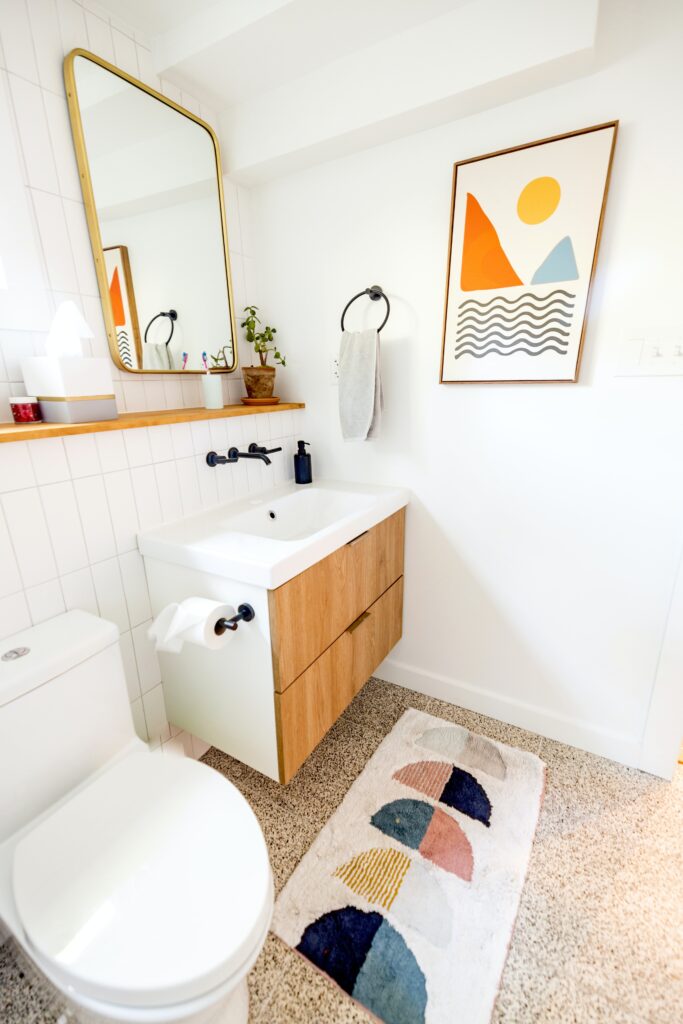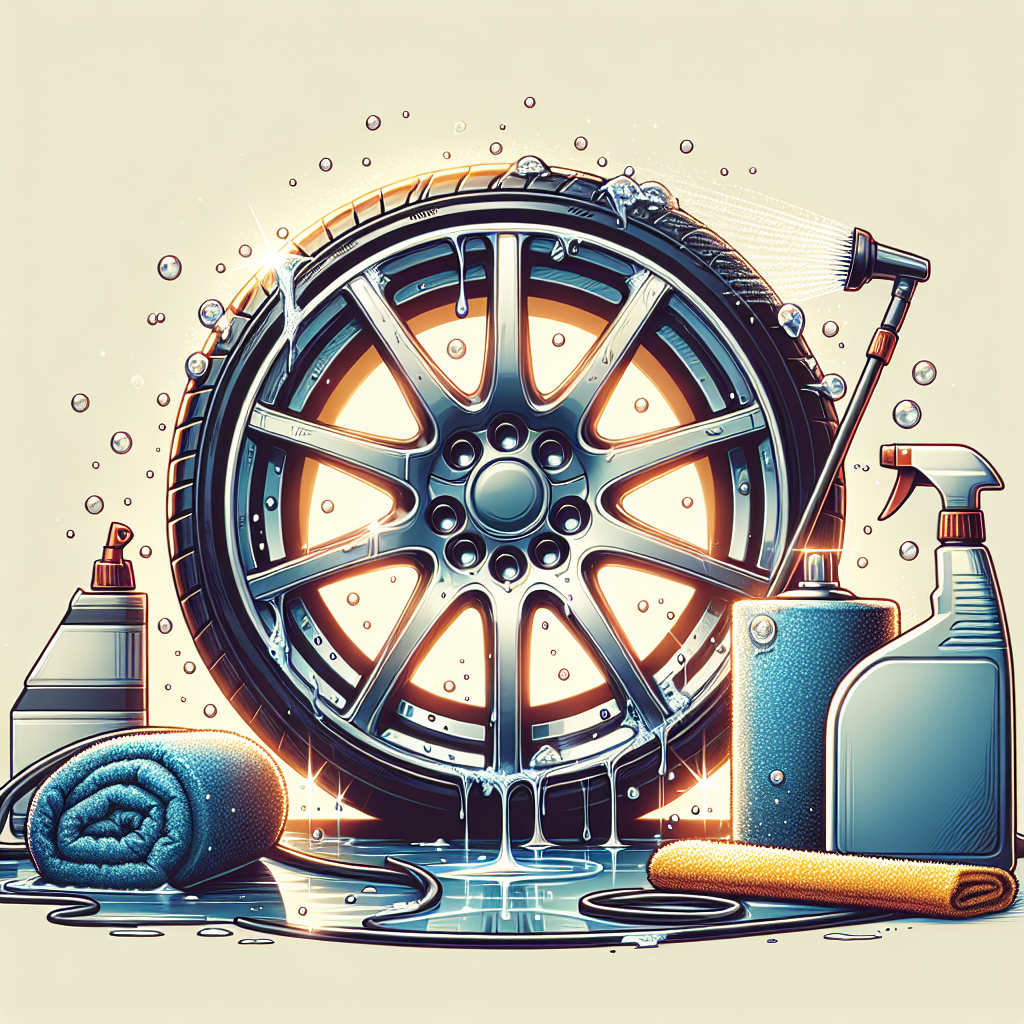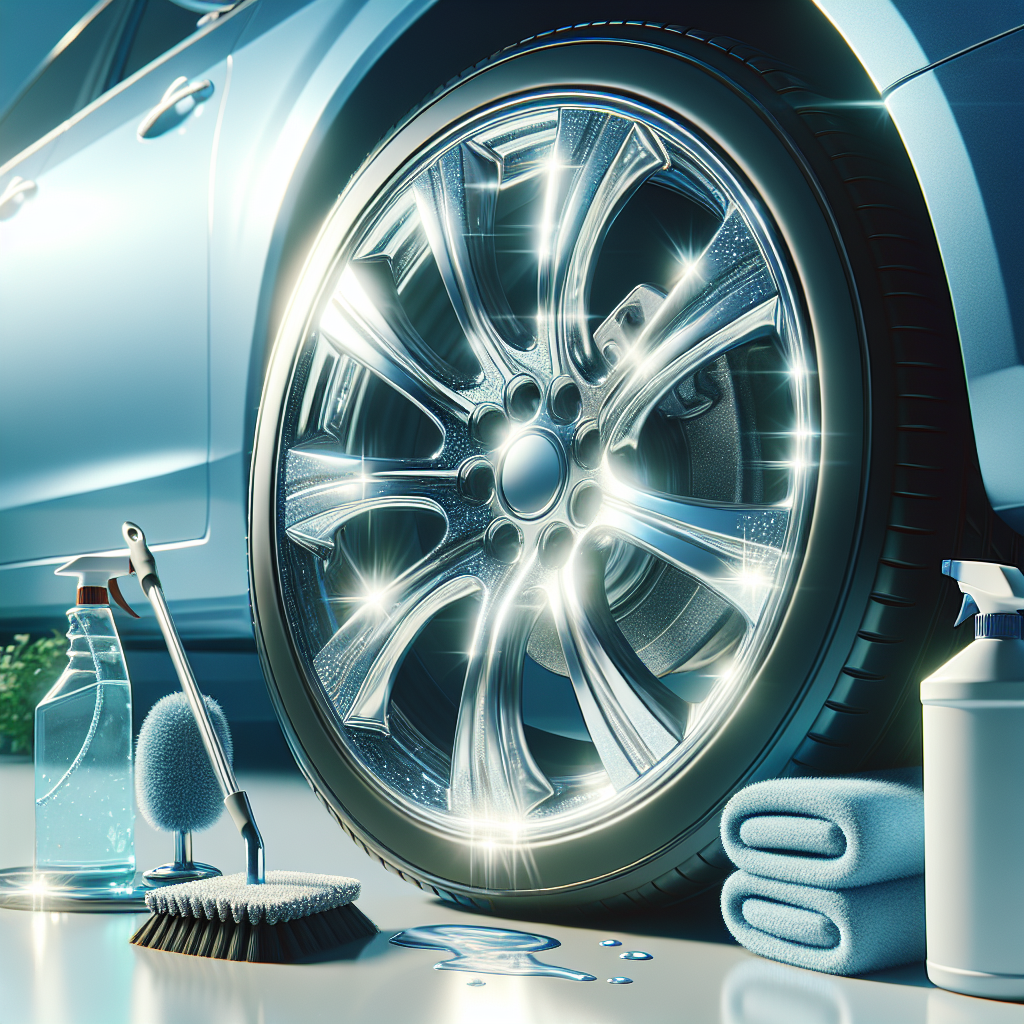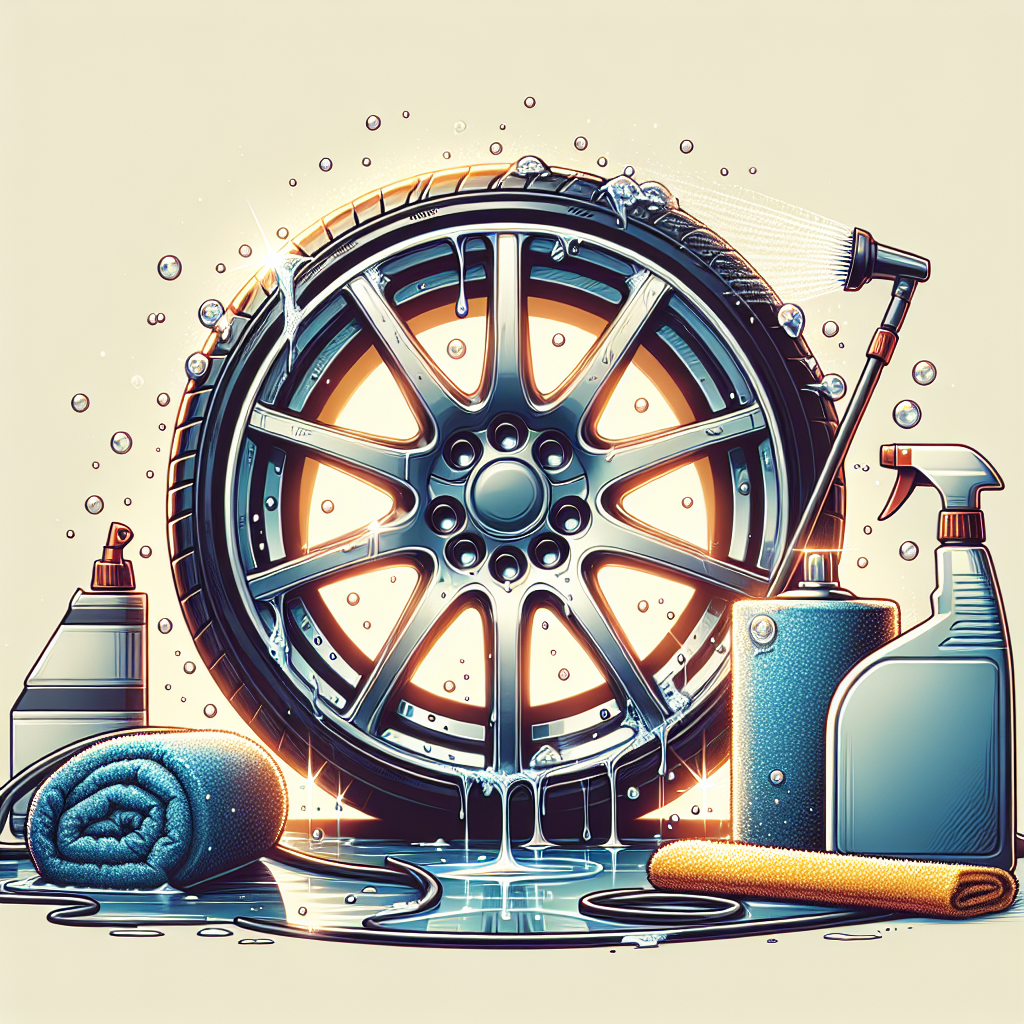Are you tired of those pesky water spots ruining the pristine look of your wheels? We’ve all been there, trying to clean and shine our precious wheels, only to be disappointed by the stubborn water spots that seem impossible to avoid. But fear not, because we have a solution for you! In this article, we will share some simple yet effective tips on how to avoid water spots during the wheel cleaning process. So buckle up and get ready to say goodbye to those unsightly spots once and for all!
1. Importance of Avoiding Water Spots
1.1 Aesthetics and Appearance
When it comes to keeping your wheels looking their best, avoiding water spots is crucial. Water spots occur when water droplets evaporate, leaving behind mineral deposits on the wheel’s surface. These spots can be unsightly and detract from the overall appearance of your vehicle. By taking steps to prevent water spots, you can ensure that your wheels maintain their shine and look their best.
1.2 Protection of Wheel Surface
Water spots are not just an aesthetic problem; they can also harm the surface of your wheels. The minerals in water can cause damage to the wheel’s finish, leading to corrosion and weakening of the surface. Over time, this can lead to diminished structural integrity and even premature wear and tear. By avoiding water spots, you can protect the surface of your wheels and extend their lifespan.
2. Preparing the Wheel for Cleaning
2.1 Rinse the Wheel Thoroughly
Before you begin cleaning your wheels, it’s important to give them a thorough rinse with water. This helps to remove any loose dirt or debris that may be present on the surface. By rinsing the wheel, you create a clean canvas for the cleaning process, ensuring that the products and techniques you use will be more effective in removing stubborn dirt and grime.
2.2 Use Wheel Cleaner
Investing in a good quality wheel cleaner is essential for achieving a thorough clean and preventing water spots. Wheel cleaners are specifically formulated to remove brake dust, road grime, and other contaminants that can accumulate on the wheels. Read the instructions carefully and apply the wheel cleaner to the surface of the wheel, making sure to cover all areas. Allow the cleaner to sit for a few minutes to loosen any stubborn dirt before moving onto the next step.
2.3 Scrubbing Brush or Sponge
To effectively remove dirt and grime from your wheels, use a soft-bristled brush or sponge. Gently scrub the surface of the wheel, paying extra attention to the areas between the spokes and around the wheel hub. Be careful not to scrub too aggressively, as this can scratch the wheel’s finish. Regularly rinse the brush or sponge to prevent dirt or debris from being transferred back onto the wheel’s surface.

3. Drying Techniques
3.1 Use Microfiber Towels
Once you have finished cleaning the wheels, it’s important to thoroughly dry them to prevent water spots. Invest in high-quality microfiber towels, as these are soft and absorbent, reducing the risk of scratches or damage to the wheel’s surface. Avoid using traditional towels or sponges, as these can leave lint or fibers behind. Gently dry the wheel’s surface, making sure to reach all areas, including between the spokes.
3.2 Start from Top to Bottom
To ensure a thorough drying process, it’s best to start drying from the top of the wheel and work your way down. This prevents any water from the upper areas of the wheel from dripping onto already dried areas. By following this technique, you can minimize the chances of water spots forming as the wheels dry.
3.3 Wipe in Straight Lines
When drying your wheels, it’s important to wipe in straight lines rather than circular motions. This helps to minimize the risk of creating swirl marks or scratches on the wheel’s surface. By using straight lines, you can achieve a more even and uniform drying process, further reducing the chances of water spots appearing.
4. Avoiding Direct Sunlight
4.1 Clean in Shade or Indoors
One of the key factors in avoiding water spots is to clean your wheels in the shade or indoors. Direct sunlight can cause water to evaporate quickly, leaving behind mineral deposits and water spots. By choosing a shaded area or cleaning indoors, you create an environment where the wheels can dry more slowly and evenly. This minimizes the risk of water spots forming on the surface.
4.2 Time Management
If cleaning your wheels outdoors is unavoidable, it’s important to take time management into consideration. Try to clean your wheels during cooler parts of the day, when the sunlight is less intense. This will allow for a longer drying time, reducing the chances of water spots forming. Additionally, work on one wheel at a time to ensure that you can dry each wheel as quickly as possible.

5. Using a Quick Detailer
5.1 Spray Quick Detailer
A quick detailer can be a handy tool to use after cleaning your wheels to further prevent water spots. Spray a small amount of quick detailer onto the surface of the wheel and use a clean microfiber towel to gently wipe away any remaining water droplets. The quick detailer helps to minimize water spotting by providing a protective barrier on the wheel’s surface.
5.2 Wipe with Microfiber
When using a quick detailer, it’s important to use a clean microfiber towel to wipe away the product. This ensures that no dirt or debris is transferred back onto the wheel’s surface. Gently wipe the wheel with the quick detailer, paying attention to any areas that may still have water droplets. By using a quick detailer, you can help to maintain the appearance of your wheels and reduce the risk of water spots forming.
6. Regular Maintenance
6.1 Clean Wheels Regularly
Regular maintenance is key to preventing water spots and keeping your wheels in top condition. Make it a habit to clean your wheels regularly, especially if you live in an area with high levels of road grime or brake dust. Regular cleaning helps to remove contaminants that can contribute to water spotting and keeps your wheels looking their best.
6.2 Apply Protective Sealant
Applying a protective sealant to your wheels can provide an additional layer of protection against water spots and other contaminants. Choose a sealant specifically designed for wheels and apply it according to the manufacturer’s instructions. The sealant helps to create a barrier on the wheel’s surface, making it easier to clean and reducing the risk of water spots forming.

7. Common Pitfalls to Avoid
7.1 Using Harsh Cleaning Chemicals
One common pitfall when cleaning wheels is using harsh cleaning chemicals. While it may be tempting to use strong chemicals to remove stubborn dirt, these can actually damage the wheel’s finish and increase the chances of water spots forming. Stick to gentle and wheel-specific cleaning products to ensure the safety and longevity of your wheels.
7.2 Not Drying Properly
Another common mistake is not drying the wheels properly. Rushing through the drying process or using inadequate drying techniques can leave behind moisture, leading to water spots. Take the time to dry the wheels thoroughly, following the recommended techniques mentioned earlier in this article. By doing so, you can avoid the frustration of dealing with stubborn water spots.
8. Storing Cleaned Wheels
8.1 Keep in a Clean and Dry Area
Once you have cleaned and dried your wheels, it’s important to store them in a clean and dry area. Avoid placing them on the ground or in an area where they may be exposed to dirt, moisture, or other contaminants. Keeping the wheels in a clean and dry environment helps to preserve their cleanliness and reduces the risk of water spots appearing.
8.2 Invest in Wheel Covers
Investing in wheel covers can provide an extra layer of protection when storing cleaned wheels. Wheel covers help to shield the wheels from dust, debris, and potential water spots that could occur during storage. Look for covers that are specifically designed for wheels and make sure they fit properly to provide the best protection.

9. Seeking Professional Help
9.1 Professional Detailing Services
If you find it challenging to prevent water spots or want to ensure a professional finish, seeking the help of a professional detailing service is an excellent option. Professional detailers have the expertise and tools to clean and protect your wheels effectively, reducing the risk of water spots appearing. They can also provide recommendations for ongoing maintenance to keep your wheels looking their best.
9.2 Wheel Coating Services
Another professional option to consider is wheel coating services. Wheel coatings create a durable and long-lasting barrier on the wheel’s surface, protecting it from water spots and other contaminants. These coatings often require professional application, ensuring a proper and even coverage. If you want to take your wheel protection to the next level, wheel coating services can be a worthwhile investment.
10. Final Tips and Tricks
10.1 Use Water Repellent Spray
To further enhance your wheel’s resistance to water spots, consider using a water repellent spray. These sprays create a hydrophobic surface, causing water to bead and roll off the wheel rather than forming spots. Apply the water repellent spray according to the manufacturer’s instructions, and enjoy the added protection against water spots.
10.2 Regularly Inspect for Damage
Finally, it’s important to regularly inspect your wheels for any signs of damage. Inspect the surface for scratches, chips, or other flaws that may compromise the wheel’s integrity. Address any issues promptly to avoid further damage and reduce the risk of water spots forming in damaged areas.
By following these tips and techniques, you can effectively avoid water spots and keep your wheels looking their best. With a little extra care and attention, you can maintain the appearance and durability of your wheels, ensuring they shine as brightly as the rest of your vehicle.


